 This story happened in 1778, a time of terrible war. As General George Washington’s troops shivered in their winter camp in Pennsylvania, at Valley Forge, Daniel Boone was hunting out west, in the future state of Kentucky. Nearby, in the forest, his friends were boiling down mineral-rich spring water to make salt for their families in Boonesborough. It was a community of cabins in and around a log stockade, to protect the pioneers from attackers. Of whom were they afraid? The First Nations, who’d been living in the so-called New World for countless generations. Specifically, Daniel Boone’s people feared the Shawnee and Cherokee peoples—and vice versa. The Native Americans were fighting an endless supply of white settlers determined to take their ancestral lands. All through and after the Revolutionary War years, American, British, and Native warriors fought throughout the wilderness west of the Appalachian Mountains and east of the Mississippi River. We know Daniel Boone as a frontier explorer and trailblazer. To the Natives, he was “Wide Mouth,” a leader of the invasion that threatened to end their ways of life forever. So it was a BIG deal when, on a winter day in 1778, Shawnee Chief Blackfish and his warriors captured him! Daniel used all of his wits to work out a trade: In return for making him and his salt-making friends their prisoners, the Shawnee would put off attacking Boonesborough. For ten days, the captives were marched through the snowy woods to Chillicothe, the big Shawnee town in Ohio. The British paid bounties for colonial prisoners, so some of Daniel’s friends were sold. They and others were lost to history, but we know that Daniel had to prove his courage in the gauntlet, dashing between rows of Shawnee warriors, getting hit by clubs. Now, he’d known Natives and studied their ways since he was a boy. To stay safe until he could get back to his family, he knew he needed to let Chief Blackfish do as he wished: adopt him into his tribe. Daniel got scrubbed. He got all of his hair plucked out except for a “scalp lock” atop his head. He got a new name too: Sheltowee or “Big Turtle.” But it was June before he got the chance to escape. Then Daniel ran, hid, hiked, and limped 160 miles home to Boonesborough, in time to prepare for the attack of the angry Shawnee. But that’s another story for another day. 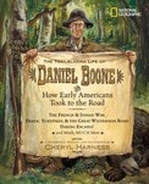 Once again, Cheryl Harness combines lively storytelling with vividly detailed illustrations to transport readers back to an exciting era in American history. During Daniel Boone's 86-year life, Colonial America is transformed into a revolutionary republic, trails morph into roads and highways, and Americans discover new ways to travel—by canal, and by steam-powered boats and trains. Readers journey through these formative milestones in America's great westward expansion with the aid of a time line running along each page, 200-plus illustrations, maps, sidebars, primary-source quotations, and resource lists. For information on The Trailblazing Life of Daniel Boone: How Early Americans Took to the Road, click here. MLA 8 Citation
Harness, Cheryl. "Kidnapped!" Nonfiction Minute, iNK Think Tank, 4 June 2018, www.nonfictionminute.org/the-nonfiction-minute/kidnapped.
0 Comments
Tap-tap-tap-tap. Do you ever hear that sound while walking around outside? If you do, you are probably hearing the sound of a woodpecker. More than 200 kinds of woodpeckers are found on Earth and they live on every continent except Australia and Antarctica. They are not only some of our most beautiful birds—they are some of the most important. Woodpeckers are especially adapted to pound, dig, and drill into wood. The main reason? To find food. Ants, beetle grubs, and other insects live under bark and inside dead wood, and woodpeckers have evolved to take advantage of this “food fest.” Woodpecker beaks are super sturdy, and the birds have extra-long, sticky tongues to probe into tiny holes and passageways. A woodpecker’s head has special shock absorbing features that keep the birds from getting brain damage while they are pounding away! As they look for food, woodpeckers are also carving out holes to live in. This helps dozens of other kinds of birds. How? Because many cavity nesting birds need holes in which to sleep and nest, but almost none of these birds can excavate holes for themselves. By drilling holes, woodpeckers are helping bluebirds, house wrens, chickadees, titmice, and many other bird species. Even some mammals and reptiles take advantage of woodpecker holes! About 22 species of woodpeckers live in the US and Canada. The most common is probably the Northern Flicker. Unlike most other woodpeckers, Northern Flickers spend a lot of time on the ground slurping up ants. In spring, they make raucous calls and like to drum on rain gutters, utility poles, and metal chimneys! Most woodpeckers use drumming to attract mates and shout, “This is my territory! Keep out!” Downy Woodpeckers also adapt well to cities and neighborhoods. They are among the smallest woodpeckers and can survive almost anywhere there are trees. Many other woodpeckers live only in certain regions or habitats of the US. Black-backed Woodpeckers live only in burned forests. Golden-fronted Woodpeckers are found mainly in Texas. White-headed Woodpeckers live only in high mountain areas of the West Coast. Wherever you find them, woodpeckers are fun to watch and fascinating to learn about. The next time you see one, stop and observe it for a while. Take a moment to appreciate its behavior and how it makes our world a richer, more interesting place. Woodpeckers are especially adapted to pound, dig, and drill into wood. The main reason? To find food. Ants, beetle grubs, and other insects live under bark and inside dead wood, and woodpeckers have evolved to take advantage of this “food fest.” Woodpecker beaks are super sturdy, and the birds have extra-long, sticky tongues to probe into tiny holes and passageways. A woodpecker’s head has special shock absorbing features that keep the birds from getting brain damage while they are pounding away! As they look for food, woodpeckers are also carving out holes to live in. This helps dozens of other kinds of birds. How? Because many cavity nesting birds need holes in which to sleep and nest, but almost none of these birds can excavate holes for themselves. By drilling holes, woodpeckers are helping bluebirds, house wrens, chickadees, titmice, and many other bird species. Even some mammals and reptiles take advantage of woodpecker holes! About 22 species of woodpeckers live in the US and Canada. The most common is probably the Northern Flicker. Unlike most other woodpeckers, Northern Flickers spend a lot of time on the ground slurping up ants. In spring, they make raucous calls and like to drum on rain gutters, utility poles, and metal chimneys! Most woodpeckers use drumming to attract mates and shout, “This is my territory! Keep out!” Downy Woodpeckers also adapt well to cities and neighborhoods. They are among the smallest woodpeckers and can survive almost anywhere there are trees. Many other woodpeckers live only in certain regions or habitats of the US. Black-backed Woodpeckers live only in burned forests. Golden-fronted Woodpeckers are found mainly in Texas. White-headed Woodpeckers live only in high mountain areas of the West Coast. Wherever you find them, woodpeckers are fun to watch and fascinating to learn about. The next time you see one, stop and observe it for a while. Take a moment to appreciate its behavior and how it makes our world a richer, more interesting place. Upper left: This large Guayaquil Woodpecker from Ecuador looks similar to our Pileated Woodpeckers, but some other South American woodpeckers come in radically different shapes and colors! Upper right: Hairy Woodpeckers are commonly found in forests and can dig deep for a juicy beetle grub! Lower left and right: Northern Flickers and Downey Woodpeckers are probably America's most adaptable woodpeckers and can often be seen in yards and neighborhoods. All photos courtesy of Sneed Collard and Braden Collard The Black-backed Woodpecker lives almost exclusively in burned forests where large dead trees are still standing. Woodpeckers provide nesting holes for dozens of our favorite birds including this spectacular Mountain Bluebird. 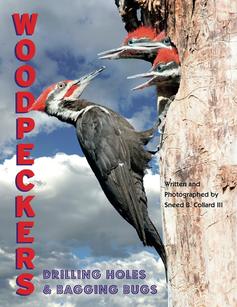 Sneed B. Collard III is the author of more than eighty books for young people, including his newest, Woodpeckers: Drilling Holes and Bagging Bugs, which received a starred review in Booklist magazine. To write the book, he and his son, Braden, spent four years observing and photographing woodpeckers in the wild. They even observed woodpeckers in Ecuador and Peru! Sneed visits schools and gives writing and professional development workshops all around the country. To learn more, visit his website, www.sneedbcollardiii.com. Also follow the blog that he and Braden write at www.fathersonbirding.com. You can read a review by Vicki Cobb here.  In 1804, President Thomas Jefferson sent Meriwether Lewis, William Clark, and a team of men on a vital mission to explore the wild, unmapped West. Lewis brought his dog along. According to journals kept by several of the explorers, the dog helped a lot. He retrieved animals that had been shot for food. He scared away grizzly bears, and a bull bison that charged into camp. The old journal pages are often hard to read, and this led to a misunderstanding of the dog's name. People thought that he was called Scannon. Not until 1985 did a historian carefully examine every mention of the dog. He found that Lewis had actually named the dog Seaman. The dog was a Newfoundland, a breed often kept on ships. They are great swimmers, and could save people from drowning. In the expedition's journals, Seaman was last mentioned in July, 1806, two months before the explorers returned from the West and reached the little town of St. Louis on the Mississippi River. After that, there is no word about the dog in letters or reports written by Lewis, Clark, or others. The mystery of what happened to Seaman was solved in the year 2000, thanks to the work of historian James Holberg. He had found a book, written in 1814 by historian Timothy Alden, which told of a little museum in Virginia. Alden found a dog collar displayed there that William Clark had given to the museum. On the collar were these words: "The greatest traveller of my species. My name is SEAMAN, the dog of captain Meriwether Lewis, whom I accompanied to the Pacifick ocean through the interior of the continent of North America." The collar was later destroyed by fire, but in his 1814 book Timothy Alden also wrote further details about Seaman. Historians report that after the expedition, Meriwether Lewis' life became one of failure and despair. In October 1809 he took his own life. Alden wrote that Seaman was there when Lewis was buried, and "refused to take every kind of food, which was offered to him, and actually pined away and died with grief upon his master's grave." People who know Newfoundland dogs say that this could be true, because these dogs are fiercely loyal to their owners. Unless historians find some new evidence, that is how the life of this great dog hero ended.  The Lewis and Clark Expedition was the first American expedition to cross what is now the western portion of the United States, departing in May 1804, from near St. Louis on the Mississippi River, making their way westward through the continental divide to the Pacific coast. Seaman was along on every bit of the round trip expedition of over seven thousand miles. However, like the explorers, he traveled many of those miles on a keel boat or canoe--up the Missouri and other rivers, downstream to the Pacific Ocean, and then the return journey to St. Louis in 1806. 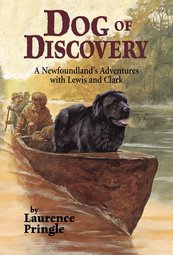 Laurence Pringle has written a book about Seaman. This richly detailed account of the Lewis and Clark expedition includes its planning, its adventures and discoveries, and its aftermath. With intriguing sidebars, historical illustrations, journal excerpts, and original art, this account of what became known as the Corps of Discovery features the remarkable dog that was the expedition's most unusual member. For more information click here. MLA 8 Citation
Pringle, Laurence. "Did the Hero Dog Survive?" Nonfiction Minute, iNK Think Tank, 29 Jan. 2018, www.nonfictionminute.org/the-nonfiction-minute/ did-the-hero-dog-survive. 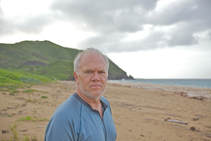
 The Earth Day Flag created by John McConnell The Earth Day Flag created by John McConnell
The celebrated astrophysicist, Neil deGrasse Tyson, said, “People never look up.” Tyson or Starman, as he is called, is right. Look up and you’ll see amazing stuff: puffy cumulonimbus clouds rising 60,000 feet, broken rainbows, blue skies bluer than blue, Venus and Mars huddling beside the new moon, the Milky Way.
When you look up, you can’t help realize you are standing, feet firmly planted, on planet Earth. We are attached in a very physical way to this place...this planet called Earth. So, not only look up, but, as Rachel Carson declared in many of her writings, “Look around, and down, and closer.” Whether you are looking up or looking down, we celebrate our home planet every year on April 22. This celebration or “birthday” is called Earth Day and it has been going on since 1970 after Gaylord Nelson, a U.S. Senator from Wisconsin, proposed a day of national focus on environmental issues. Buoyed by the success of Rachel Carson’s book Silent Spring, about the concern for living organisms and the environment, Earth Day 1970 set out to raise public awareness for the health and harmony of the planet. People from all walks of life— young and old, farmers and urban dwellers, liberals and conservatives— banded together and achieved great things. The first Earth Day on April 22, 1970 led to the creation of the United States Environmental Protection Agency and the passage of the Clean Air Act, the Clean Water Act, and the Endangered Species Act. And now, forty-six years later, Earth Day 2016 has gone truly global. Around the world, people celebrate Earth Day with massive rallies, marches and festivals. But for many people it is not just an annual event, but all the quiet acts and the simple habits performed throughout the year. For instance, I make it a habit of recycling every piece of plastic I use (or as much as humanly possible). Less plastic that ends up in the oceans means happier and healthier sea turtles and whales. If you want some ideas about how you can demonstrate your support for environmental protection, you might start by checking out the book, Recycle This Book - 100 Top Children’s Book Authors Tell You How To Go Green. And if you link to the Earth Day website, you can take a peek at all the great activities planned around the world on April 22, 2018. Let’s make this the best Earth Day ever...all year long! 
With essays from renowned children’s book authors such as Ann Brashares, Jeanne DuPrau, Caroline B. Cooney, Laurie Halse Anderson, Bruce Coville, Gennifer Choldenko, and more than 100 others, each piece is an informative and inspiring call to kids of all ages to understand what’s happening to the environment, and to take action in saving our world. Helpful tips and facts are interspersed throughout.
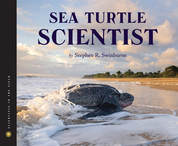
Part of the award-winning Scientists in the Field book series, Sea Turtle Scientist introduces Dr. Kimberly Stewart, “the turtle lady,” and describes her work on St. Kitts with endangered loggerhead sea turtles. The book provides extensive information on sea turtles and Dr. Stewart’s research, as well as the efforts of WIDECAST to preserve and protect these amazing creatures. For more information, visit the author's website.
Stephen R. Swinburne is a member of iNK's Authors on Call and is available for classroom programs through Field Trip Zoom, a terrific technology that requires only a computer, wifi, and a webcam. Click here to find out more.
MLA 8 Citation
 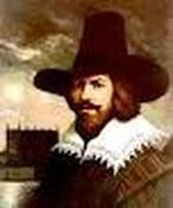 Guy Fawkes Guy Fawkes During much of the sixteenth century, England was wracked by violence between Catholics and Protestants. Hundreds of Protestants were executed during the reign of Queen Mary (1553–1558), earning her the nickname of “Bloody Mary.” Her Protestant successor, Queen Elizabeth (1558–1603) returned the favor by persecuting and killing Catholics. She was followed by James I, whose Catholic mother had been executed. James’s wife had recently converted to Catholicism. English Catholics therefore hoped he would be more tolerant than Elizabeth. While the number of executions dropped off, James ordered Catholic priests to leave England and said that Protestantism was the one true faith. Despairing Catholics decided on a desperate measure. They would assassinate James and install his nine-old-daughter Elizabeth as a Catholic monarch. The plotters secreted three dozen barrels of gunpowder in the basement beneath the House of Lords a few days before the opening of Parliament on November 5, 1605. Guy Fawkes, one of the plotters, planned to ignite a fuse when King James entered the chamber and then scurry to safety. With most members of Parliament and other high officials dead in the explosion, the resulting chaos would make it easier for the schemers to seize control of the government. However, some of the conspirators realized that this plan would kill a lot of innocent people, including Catholics. So in late October, one of them sent an anonymous warning letter to a Catholic Member of Parliament. He passed along the message to the king’s guardians. Shortly after midnight on November 5, a search party discovered Fawkes and the concealed gunpowder. He was tortured for several days to reveal the names of the other conspirators and then executed. His body was hacked into several pieces. The grisly chunks were displayed in several parts of England as a warning to would-be traitors. In celebration of the king’s salvation, many people lit bonfires on the night of the discovery. That began a tradition that continues to this day in what is known as Bonfire Night. Tonight in nations of the British Empire, revelers, many wearing Guy Fawkes apparel, are shooting off fireworks and building huge bonfires to burn effigies of the man regarded as England’s most notorious traitor. Happy Guy Fawkes Day!
 Jim Whiting has written more than a hundred books on many subjects. His is a very interesting person. Check out his website on Amazon. MLA 8 Citation
Whiting, Jim. "Let's Blow Up the King!" Nonfiction Minute, iNK Think Tank, 6 Nov. 2017, http://www.nonfictionminute.org/the-nonfiction-minute/lets-blow-up-the-king. |
*NEWS
|
For Vicki Cobb's BLOG (nonfiction book reviews, info on education, more), click here: Vicki's Blog
The NCSS-CBC Notable Social Studies Committee is pleased to inform you
that 30 People Who Changed the World has been selected for Notable Social Studies Trade Books for Young People 2018, a cooperative project of the National Council for the Social Studies (NCSS) & the Children’s Book Council
Categories
All
Abolitionists
Adams Janus
Adaptation
Adaptations
Adkins Jan
Advertising
Aerodynamics
Africa
African American History
African Americans
Africa West
Agriculture
Aircraft
Air Pilots
Air Pressure
Air Travel
Albee Sarah
Alchemy
Alligators
Allusion
American History
American Icons
Amphibians
Amundsen Roald
Anatomy
Ancient
Ancient Cultures
Anderson Marian 1897-1993
Animal Behavior
Animal Experimentation
Animal Intelligence
Animals
Animation
Antarctica
Ants
Apache Indians
Apes
April Fool's Day
Architecture
Argument
Arithmetic
Art
Art Deco
Artists
Arts
Asia
Astronauts
Astronomy
Athletes
Atomic Theory
Audubon Societies
Authors
Autobiography
Automobiles
Aviation
Awards
Bacteria
Baseball
Battuta Ibn
Bears
Beatles
Beavers
Bees
Biodegradation
Biography
Biology
Biomes
Biomimicry
Biplanes
Birds
Black Death
Black History
Blindness
Blizzards
Bombs
Bonaparte Napoleon
Boone Daniel
Botany
Brazil
Bridges
Brill Marlene Targ
Brooklyn Bridge
Brown John
Buffaloes
Building Materials
Butterflies
Caesar
Caesar Julius
Caissons
Calculus
Calendars
Cannibal
Capitals
Caravaggio
Carbon Dioxide
Carnivores
Carson Mary Kay
Cartoons & Comics
Carving (Decorative Arts)
Cascade Range
Castaldo Nancy
Castles
Castrovilla Selene
Cathedrals
Cats
Caves
Celts
Cemeteries
Chemistry
Children's Authors
Child Welfare
China
Choctaw Indians
Christmas
Chronometers
Cicadas
Cinco De Mayo
Ciphers
Circle
Citizenship
Civil Rights
Civil Rights Movements
Civil War
Civil War - US
Climate
Climate Change
Clocks And Watches
Clouds
Cobb Vicki
COBOL (Computer Language)
Code And Cipher Stories
Collard III Sneed B.
Collectors And Collecting
Color
Commerce
Communication
Competition
Compilers
Composers
Computers
Congressional Gold Medal
Consitution
Contests
Contraltos
Coolidge Calvin
Cooling
Corms
Corn
Counterfeiters
Covid-19
Crocodiles
Cryptography
Culture
Darwin Charles
Declaration Of Independence
Decomposition
Decompression Sickness
Deep-sea Animals
Deer
De Medici Catherine
Design
Detectives
Dickens Charles
Disasters
Discrimination
Diseases
Disney Walt
DNA
Dogs
Dollar
Dolphins
Douglass Frederick 1818-1895
Droughts
Dr. Suess
Dunphy Madeleine
Ear
Earth
Earthquakes
Ecology
Economics
Ecosystem
Edison Thomas A
Education
Egypt
Eiffel-gustave-18321923
Eiffel-tower
Einstein-albert
Elephants
Elk
Emancipationproclamation
Endangered Species
Endangered-species
Energy
Engineering
England
Englishlanguage-arts
Entomology
Environmental-protection
Environmental-science
Equinox
Erie-canal
Etymology
Europe
European-history
Evolution
Experiments
Explorers
Explosions
Exports
Extinction
Extinction-biology
Eye
Fairs
Fawkes-guy
Federalgovernment
Film
Fires
Fishes
Flight
Floods
Flowers
Flute
Food
Food-chains
Foodpreservation
Foodsupply
Food-supply
Football
Forceandenergy
Force-and-energy
Forensicscienceandmedicine
Forensic Science And Medicine
Fossils
Foundlings
France
Francoprussian-war
Freedom
Freedomofspeech
French-revolution
Friction
Frogs
Frontier
Frontier-and-pioneer-life
Frozenfoods
Fugitiveslaves
Fultonrobert
Galapagos-islands
Galleys
Gametheory
Gaudi-antoni-18521926
Gender
Generals
Genes
Genetics
Geography
Geology
Geometry
Geysers
Ghosts
Giraffe
Glaciers
Glaucoma
Gliders-aeronautics
Global-warming
Gods-goddesses
Gold-mines-and-mining
Government
Grant-ulysses-s
Grasshoppers
Gravity
Great-britain
Great-depression
Greece
Greek-letters
Greenberg Jan
Hair
Halloween
Handel-george-frederic
Harness Cheryl
Harrison-john-16931776
Health-wellness
Hearing
Hearing-aids
Hearst-william-randolph
Henry-iv-king-of-england
Herbivores
Hip Hop
History
History-19th-century
History-france
History-world
Hitler-adolph
Hoaxes
Holidays
Hollihan Kerrie Logan
Homestead-law
Hopper-grace
Horses
Hot Air Balloons
Hot-air-balloons
Housing
Huguenots
Human Body
Hurricanes
Ice
Icebergs
Illustration
Imagery
Imhotep
Imperialism
Indian-code-talkers
Indonesia
Industrialization
Industrial-revolution
Inquisition
Insects
Insulation
Intelligence
Interstatecommerce
Interviewing
Inventions
Inventors
Irrational-numbers
Irrigation
Islands
Jacksonandrew
Jazz
Jeffersonthomas
Jefferson-thomas
Jemisonmae
Jenkins-steve
Jet-stream
Johnsonlyndonb
Jokes
Journalism
Keeling-charles-d
Kennedyjohnf
Kenya
Kidnapping
Kingmartinlutherjr19291968
Kingmartinlutherjr19291968d6528702d6
Kings-and-rulers
Kings Queens
Kings-queens
Koala
Labor
Labor Policy
Lafayette Marie Joseph Paul Yves Roch Gilbert Du Motier Marquis De 17571834
Landscapes
Languages-and-culture
Law-enforcement
Layfayette
Levers
Levinson Cynthia
Lewis And Clark Expedition (1804-1806)
Lewis Edmonia
Liberty
Lift (Aerodynamics)
Light
Lindbergh Charles
Liszt Franz
Literary Devices
Literature
Lizards
Longitude
Louis XIV King Of France
Lumber
Lunar Calendar
Lynching
Macaws
Madison-dolley
Madison-james
Madison-james
Mammals
Maneta-norman
Maneta-norman
Marathon-greece
Marine-biology
Marine-biology
Marines
Marsupials
Martial-arts
Marx-trish
Mass
Massachusetts-maritime-academy
Mass-media
Mastodons
Mathematics
May-day
Mcclafferty-carla-killough
Mcclafferty-carla-killough
Mckinley-william
Measurement
Mechanics
Media-literacy
Media-literacy
Medicine
Memoir
Memorial-day
Metaphor
Meteorology
Mexico
Mickey-mouse
Microscopy
Middle-west
Migration
Military
Miners
Mississippi
Molasses
Monarchy
Monsters
Montgomery
Montgomery-bus-boycott-19551956
Montgomery-heather-l
Monuments
Moon
Moran-thomas
Morsecode
Morsesamuel
Moss-marissa
Moss-marissa
Motion
Motion-pictures
Mummies
Munro-roxie
Munro-roxie
Musclestrength
Museums
Music
Muslims
Mythologygreek
Nanofibers
Nanotechnology
Nathan-amy
Nathan-amy
Nationalfootballleague
Nationalparksandreserves
Nativeamericans
Native-americans
Native-americans
Naturalhistory
Naturalists
Nature
Nauticalcharts
Nauticalinstruments
Navajoindians
Navigation
Navy
Ncaafootball
Nervoussystem
Newdeal19331939
Newman-aline
Newman-aline
Newton-isaac
New-york-city
Nobelprizewinners
Nomads
Nonfictionnarrative
Nutrition
Nylon
Nymphs-insects
Oaths Of Office
Occupations
Ocean
Ocean-liners
Olympics
Omnivores
Optics
Origami
Origin
Orphans
Ottomanempire
Painters
Painting
Paleontology
Pandemic
Paper-airplanes
Parksrosa19132005
Parrots
Passiveresistance
Patent Dorothy Hinshaw
Peerreview
Penguins
Persistence
Personalnarrative
Personification
Pets
Photography
Physics
Pi
Pigeons
Pilots
Pinkertonallan
Pirates
Plague
Plains
Plainsindians
Planets
Plantbreeding
Plants
Plastics
Poaching
Poetry
Poisons
Poland
Police
Political-parties
Pollen
Pollution
Polo-marco
Populism
Portraits
Predation
Predators
Presidentialmedaloffreedom
Presidents
Prey
Prey-predators
Prey-predators
Prime-meridian
Pringle Laurence
Prohibition
Proteins
Protestandsocialmovements
Protestants
Protestsongs
Punishment
Pyramids
Questioning
Radio
Railroad
Rainforests
Rappaport-doreen
Ratio
Reading
Realism
Recipes
Recycling
Refrigerators
Reich-susanna
Religion
Renaissance
Reproduction
Reptiles
Reservoirs
Rheumatoidarthritis
Rhythm-and-blues-music
Rice
Rivers
Roaringtwenties
Roosevelteleanor
Rooseveltfranklind
Roosevelt-franklin-d
Roosevelt-theodore
Running
Russia
Safety
Sanitation
Schwartz David M
Science
Scientificmethod
Scientists
Scottrobert
Sculpture
Sculpturegardens
Sea-level
Seals
Seals-animals
Secretariesofstate
Secretservice
Seeds
Segregation
Segregationineducation
Sensessensation
September11terroristattacks2001
Seuss
Sextant
Shackletonernest
Shawneeindians
Ships
Shortstories
Silkworms
Simple-machines
Singers
Siy Alexandra
Slavery
Smuggling
Snakes
Socialchange
Social-change
Socialjustice
Social-justice
Socialstudies
Social-studies
Social-studies
Sodhouses
Solarsystem
Sound
Southeast-asia
Soybean
Space Travelers
Spain
Speech
Speed
Spiders
Spies
Spiritualssongs
Sports
Sports-history
Sports-science
Spring
Squirrels
Statue-of-liberty
STEM
Storms
Strategy
Sugar
Sumatra
Summer
Superbowl
Surgery
Survival
Swanson-jennifer
Swinburne Stephen R.
Synthetic-drugs
Taiwan
Tardigrada
Tasmania
Tasmanian Devil
Tasmanian-devil
Technology
Tecumsehshawneechief
Telegraph-wireless
Temperature
Tennis
Terrorism
Thomas Peggy
Thompson Laurie Ann
Time
Titanic
Tombs
Tortoises
Towle Sarah
Transcontinental-flights
Transportation
Travel
Trees
Trung Sisters Rebellion
Tundra
Turnips
Turtles
Typhoons
Underground Railroad
Us-environmental-protection-agency
Us History
Us-history
Ushistoryrevolution
Us History Revolution
Us-history-war-of-1812
Us Presidents
Ussupremecourtlandmarkcases
Vacations
Vaccines
Vangoghvincent
Vegetables
Venom
Vietnam
Viruses
Visual-literacy
Volcanoes
Voting-rghts
War
Warne-kate
Warren Andrea
Washington-dc
Washington George
Water
Water-currents
Wax-figures
Weapons
Weather
Weatherford Carole Boston
Whiting Jim
Wildfires
Winds
Windsor-castle
Wolves
Woman In History
Women
Women Airforce Service Pilots
Women-airforce-service-pilots
Womeninhistory
Women In History
Women-in-science
Women's History
Womens-roles-through-history
Wonder
Woodson-carter-godwin-18751950
World-war-i
World War Ii
World-war-ii
Wright Brothers
Writing
Writing-skills
Wwi
Xrays
Yellowstone-national-park
Zaunders Bo
ArchivesMarch 2021
February 2021
January 2021
December 2020
November 2020
October 2020
September 2020
June 2020
May 2020
April 2020
March 2020
February 2020
January 2020
December 2019
October 2019
September 2019
August 2019
July 2019
May 2019
April 2019
March 2019
February 2019
January 2019
December 2018
November 2018
September 2018
June 2018
May 2018
April 2018
March 2018
February 2018
January 2018
December 2017
November 2017
October 2017
September 2017
March 2017
The NONFICTION MINUTE, Authors on Call, and. the iNK Books & Media Store are divisions of iNK THINK TANK INC.
a 501 (c) (3) nonprofit corporation. To return to the iNK Think Tank landing page click the icon or the link below. :
http://inkthinktank.org/
For more information or support, contact thoughts@inkthinktank.org
For Privacy Policy, go to
Privacy Policy
© COPYRIGHT the Nonfiction Minute 2020.
ALL RIGHTS RESERVED.
This site uses cookies to personalize your experience, analyze site usage, and offer tailored promotions. www.youronlinechoices.eu
Remind me later
Archives
March 2023
February 2023
January 2023
December 2022
November 2022
October 2022
September 2022
June 2022
May 2022
April 2022
March 2022
February 2022
January 2022
December 2021
November 2021
September 2021
April 2021
March 2021
February 2021
November 2020
October 2020
September 2020
June 2020
May 2020
April 2020
March 2020
February 2020
January 2020
October 2019
August 2019
July 2019
May 2019
April 2019
December 2018
September 2018
June 2018
May 2018
March 2018
February 2018
January 2018
December 2017
November 2017
October 2017
September 2017


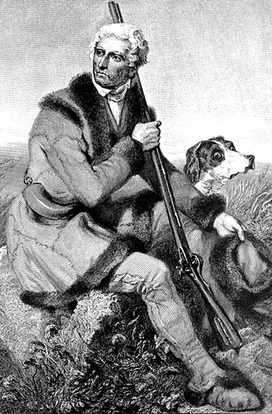
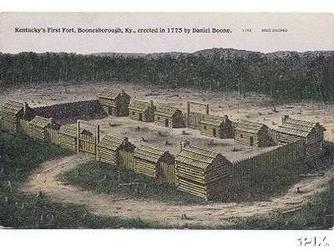
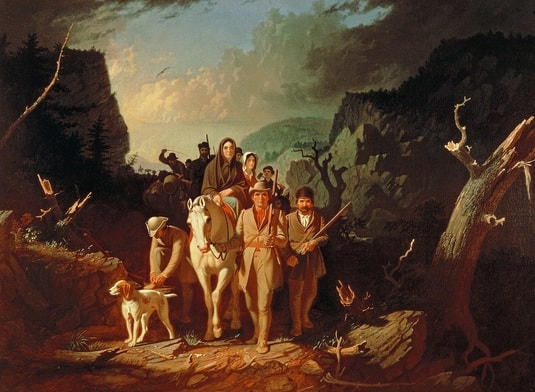


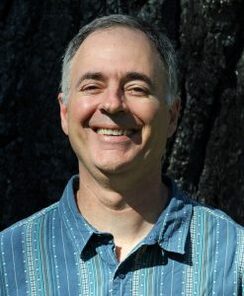

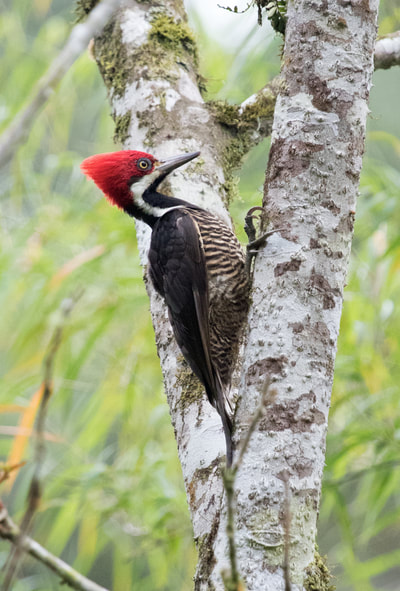
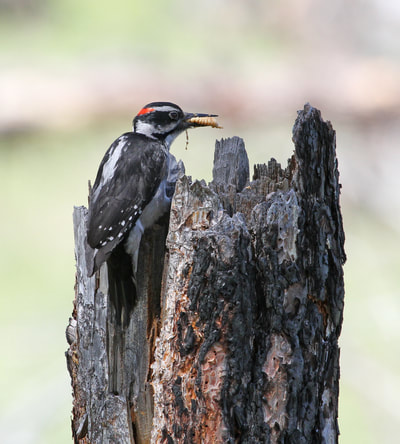
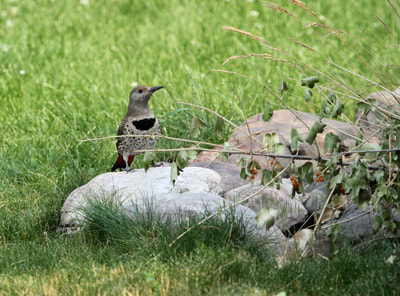

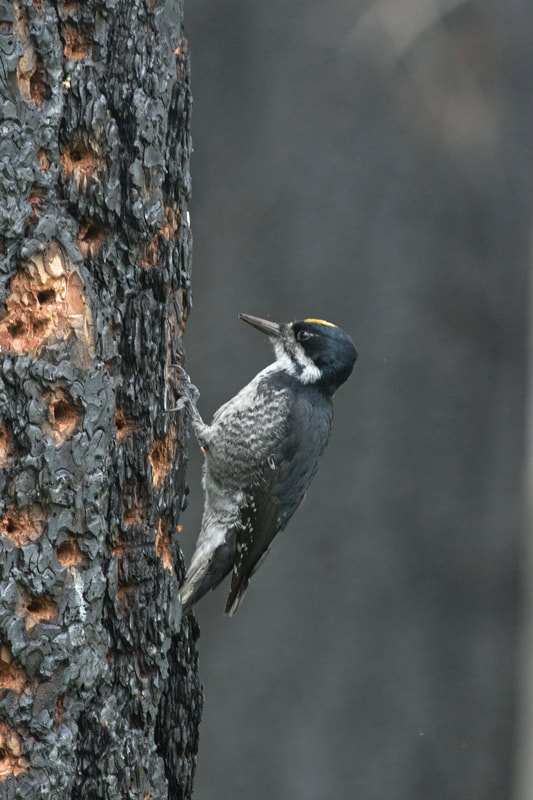
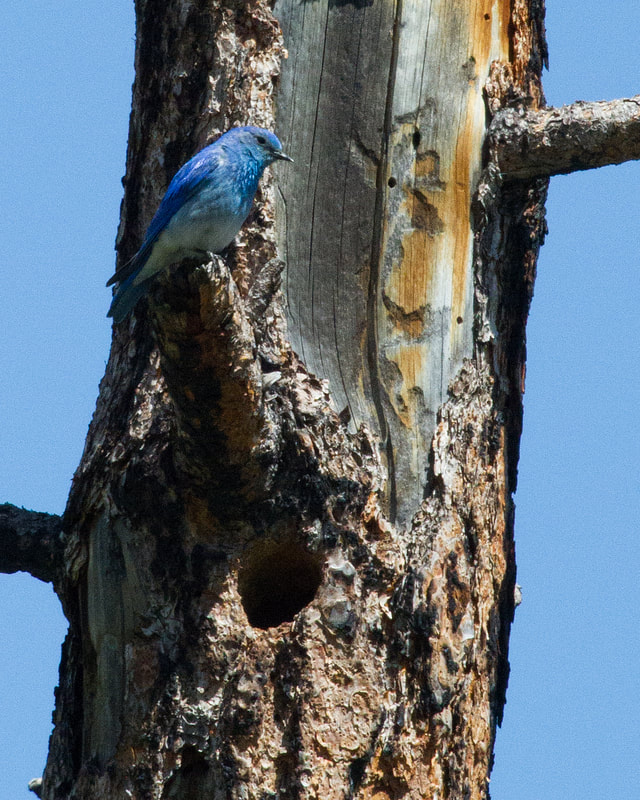

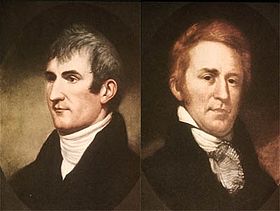
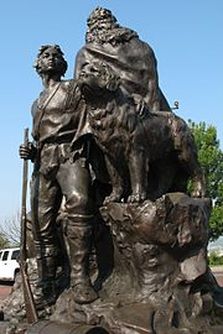





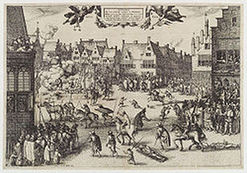
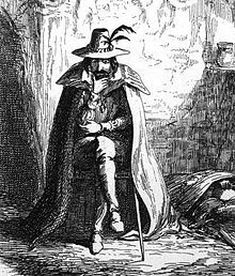


 RSS Feed
RSS Feed
